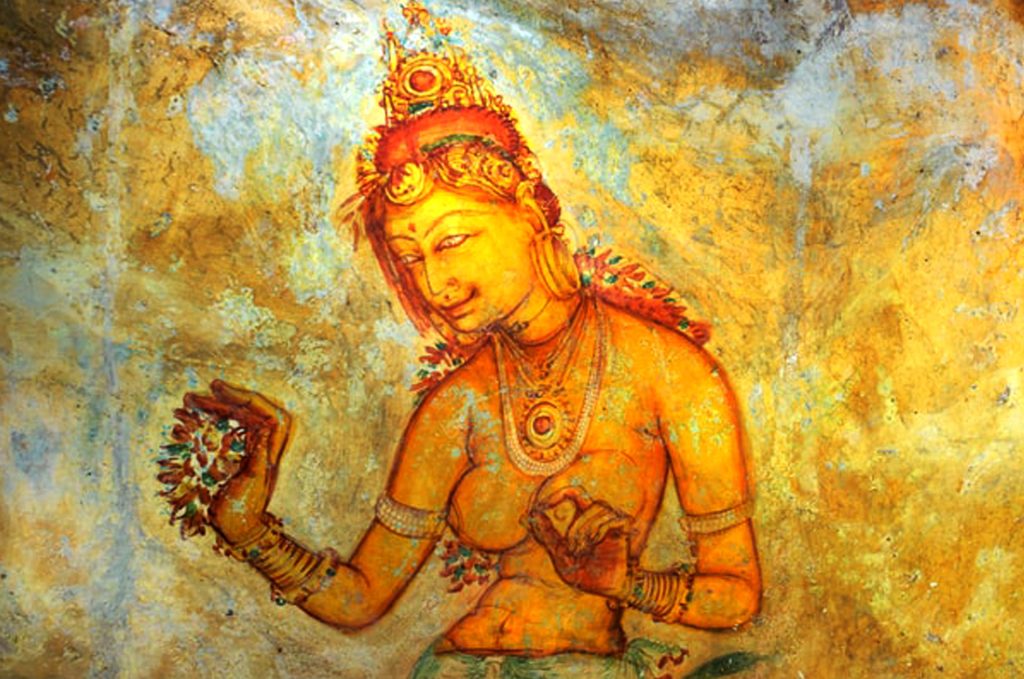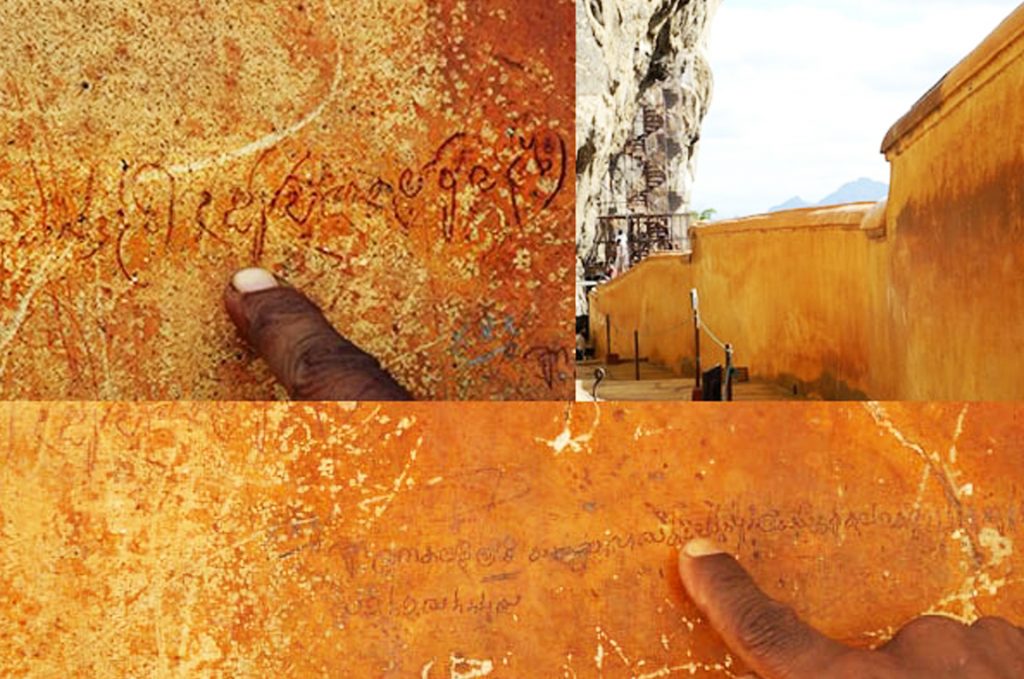Sigiriya rock fortress is the most visited tourist attraction in Sri Lanka. It is sometimes known as the Sigiriya Lion Rock, after its original name “Sinha-Giri”. The name comes from its palace entrance through a massive brick sculpture of a lion head. Only the paws of this sculpture remain at the foot of the rock today. Sigiriya rock fortress is a fifth-century fortified palace complex, which was used by King Kassapa (477CE-493CE). The Sigiriya rock abruptly rises 600 feet high from the surrounding plains. The ruins of King Kassapa’s royal palace are scattered on the peak rock plateau. The hike to the top is via 1200 steps. Some of them were constructed at the time of King Kassapa. The foothills and immediate surroundings of the Sigiriya rock were once an elaborate royal pleasure garden. The archaeological value of the site is immeasurable, perhaps unsurpassed in South Asia.
Most Sri Lankan ruins have a religious significance. However, the ancient city of Sigiriya is not a pilgrimage site. It provides valuable insight into the non-religious architecture and high culture of ancient Sri Lanka. Along the stairway to the top are the Sigiriya rock fresco pockets. The pockets house 21 fresco paintings of voluptuous women. Five hundred such paintings are said to have adorned the rock walls flanking the stairway. These paintings closely resemble the classical art schools of ancient Indian kingdoms. Notably, cave No.16 of central India’s Ajanta cave paintings are contemporaries of the Sigiriya rock paintings. However, the copper blue pigment and preservative coating used, show distinct technical differences between the schools of central India and Sigiriya in Sri Lanka. The Sigiriya rock paintings also point towards a realist movement within the greater Indian classical art spectrum. As far as we know, this realist movement is sorely unique to Sigiriya rock paintings in Sri Lanka. The entire archaeological complex of the ancient city of Sigiriya is a UNESCO world heritage site.

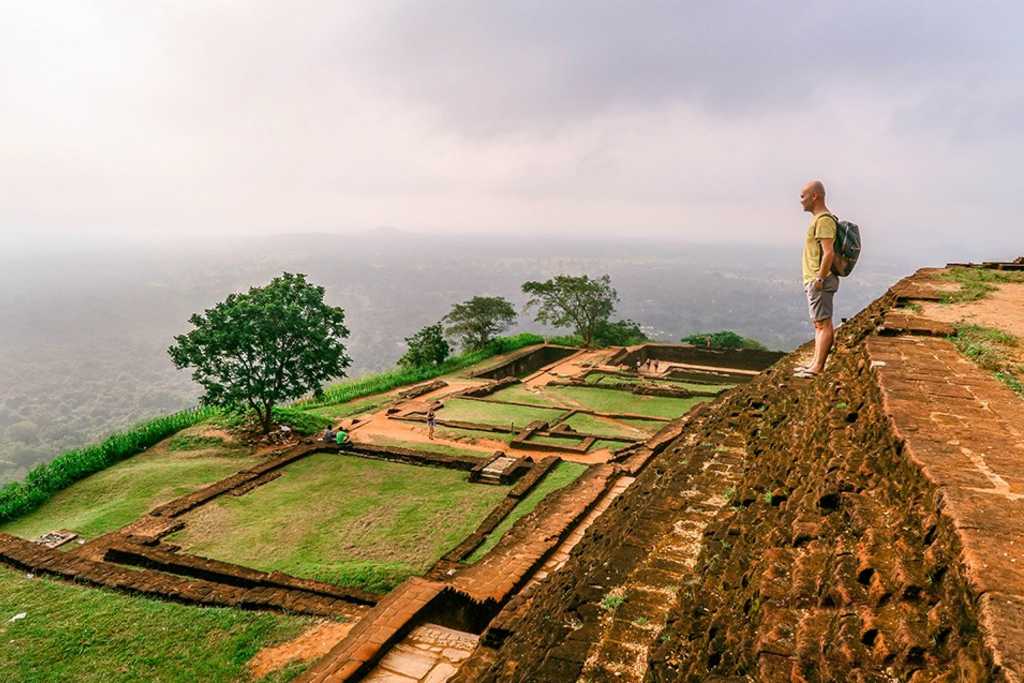

The Eight World Wonder – Sigiriya Rock Fortress Sri Lanka
Highlights
- Overview of the Sigiriya Rock Fortress
-
Sigiriya Lion Rock Pleasure Gardens
-
Sigiriya Water Garden
-
Sigiriya Terance Garden
-
Sigiriya Boulder Garden
-
Sigiriya Lion Rock Ancient Stairway
-
Sigiriya Fresco Paintings Pocket
-
Sigiriya Mirror Wall and Sigiriya Graffiti
-
Sigiriya Lion’s Paws Sculpture
-
Sigiriya Lion Rock Palace Complex
Sigiriya Lion Rock Sri Lanka – Pleasure Gardens
The Sigiriya lion rock pleasure gardens cover about 15 hectares of the immediate Sigiriya rock surroundings. This area consists of relatively flat land and foothills that gradually rise up to the main rock. The Sigiriya rock pleasure garden is one of the oldest landscape gardens in the world. Here, the unknown designer(s) had used the natural contour and other features of the land with minimum interference.
The sophisticated design features a water garden, a fountain garden, a boulder garden, and a terrace garden. The royal elite of Sigiriya celebrated sensual pleasures. They were known to hold ceremonial water games, at which the royals, nobles, guests, and the harem took part. Water was a luxury to the ancient Sri Lankans. It was shared with the people by creating public reservoirs.
The ancient Sigiriya wewa reservoir lies just south of the main site. This reservoir feeds two defensive moats that form a square around the Sigiriya rock fortress. Three sets of ramparts follow these moats. Only the brick foundations of the ramparts remain today. However, the outer moat is still infested with crocodiles. The original drawbridge is replaced by a modern pathway, which also borders a security office. The remains of sentry chambers are visible on the inner bank of the outer moat. The entrance is through the inner rampart, which is followed by the inner moat. From there on a wide straight path dissects the symmetrical Sigiriya water gardens.
Sigiriya Lion Rock in Sri Lanka – Ancient Stairway
A wide square-shaped viewpoint marks the end of the terrace gardens. From here on, a nineteenth-century iron stairway follows the signs of an ancient stairway that probably was woodwork. Hundreds of rock-cut footings can be seen along the new pathway that leads to the Sigiriya lion’s paw sculpture. Two must-see places at Sigiriya lie along the new stairway.
Sigiriya Lion Rock Palace Complex (Sigiriya Rock Fortress)
A long modern flight of steps roughly follows the original path that leads to the Sigiriya lion rock palace complex on the summit. The palace covered the whole 1.5 hectares on the Sigiriya rock plateau. Only the foundations, a rock-cut seat, and the royal pool are visible today. The highlight of the summit is the 3600 spectacular views of the surrounding plains.
3600 views from Sigiriya Rock Fortress
The summit of Sigiriya offers amazing views. The summit is 600 feet above the surrounding plains and 1,144 feet above sea level. The gneiss formations of Sigiriya become hauntingly colorful at dusk. The west side cliff offers superb views of the royal pleasure gardens below. To the north is the “Mapagala mountain”. To the south is the popular Pidurangala rock. On a clear day, the stupas of Anuradhapura can be seen as dots to the Northwest. The views from the Sigiriya summit are really what makes the hike worth it.
Sigiriya Palace Foundations
The foundations of the Sigiriya royal palace completely cover the summit plateau. The highest point on the summit shows the foundations of King Kassapa’s bedchamber. The plan of the palace complex follows the natural slope to the south. Two rock-cut pools can be seen among the ruins as well. One of these is surrounded by smooth pavement. Nearby, a finely carved stone seat may have served King Kassapa of Sigiriya himself.

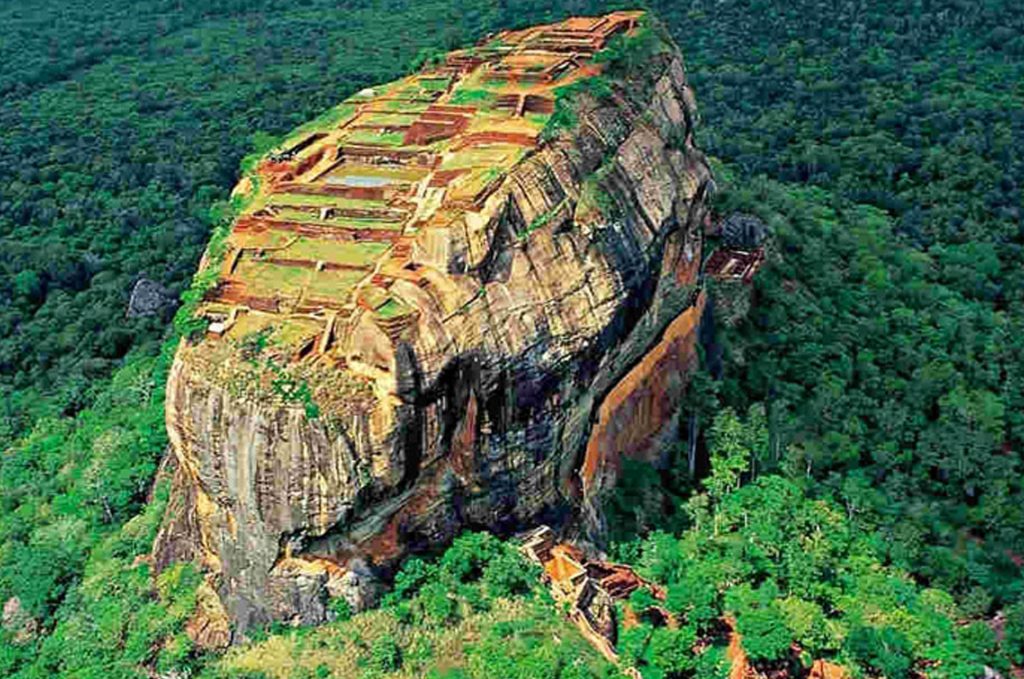
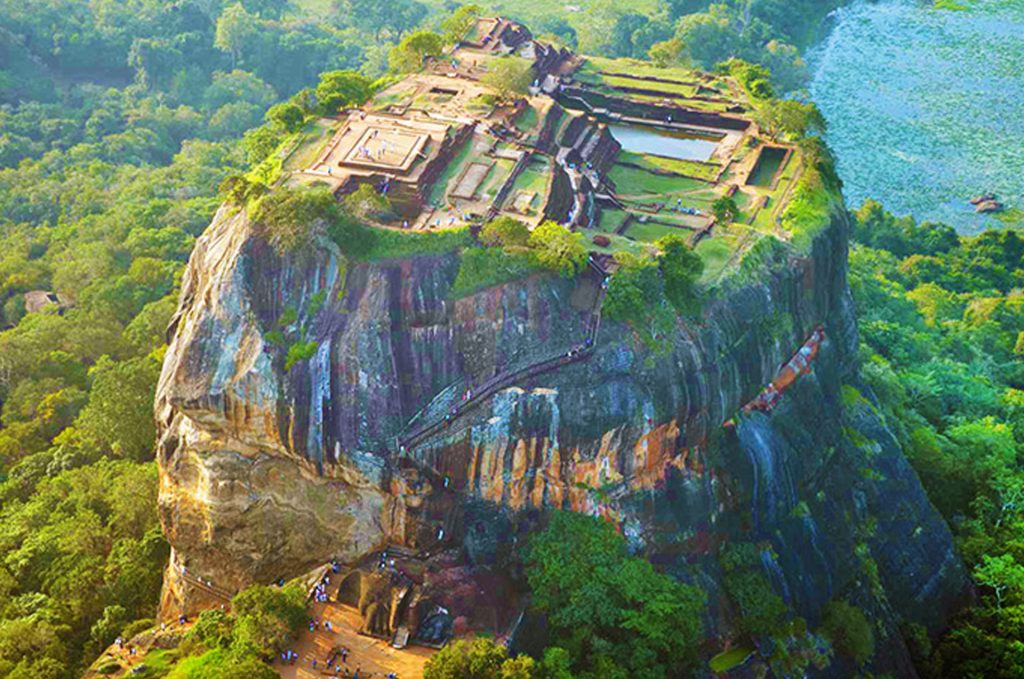
Sigiriya Rock Fortress Sri Lanka FAQs
- What is Sigiriya well-known for?
Sigiriya is one of South Asia’s most well-preserved ancient rock fortresses. It is a work of ancient urban planning/landscape development, architecture/construction technology, outstanding hydraulic engineering and management, and ancient fine art that exhibits an unmatched harmony between nature and human creativity. As a result, UNESCO designated this site as a World Heritage Site.
- Who constructed Sigiriya Rock?
Kashyapa, a Sri Lankan king, created the renowned Sigiriya Lion Rock.
- How many stairs are there at Lion Rock Sigiriya to climb?
About 1,200 stairs must be climbed to reach the top.
- What is the elevation of Sigiriya?
The elevation difference between it and the surrounding plain is 660 feet.
- Is climbing Sigiriya difficult or dangerous?
Climbing is not unsafe, but be sure you are in good enough health to do so.
- Can older people scale the lion rock stronghold of Sigiriya?
People do, and you can take your time and work your way up. There are spots where you can relax and climb.
We recommend that you keep older people at a neighboring restaurant while you climb. You might also take them to the Sigiriya museum, which is adjacent to the main entrance.
- Is it safe for my infant or kid to climb Lion Rock?
It’s not advised, yet individuals do climb with children as young as eight years old.
- When is Sigiriya Lion Rock open to the public?
Monday through Friday, 7:00 a.m. to 5:00 p.m.
- Sigiriya Lion Rock Entrance Fees
30 USD per individual/foreign national.
Only citizens of SAARC countries will be charged $15 per person (you need to submit a passport to get this discount.)
- When is the ideal time to climb the Lion Rock in Sigiriya?
Ideally, in the morning, between 8 and 10 a.m., or between 3 and 5 p.m., to escape the scorching sun.
- How hot is the Sigiriya lion rock?
The temperature ranges from 27 to 30 degrees Celsius.
- Is it possible to purchase a Sigiriya Lion Rock entry ticket online?
Not yet, but it will be available shortly.
- What is the Sigiriya Lion Rock dress code?
Sigiriya is neither a temple nor a religious site, and you are free to dress as you want.
Images by Google – Credit to original owners




